C header sample.
typedef LPVOID UKWD_USB_DEVICE;
typedef struct _UKWD_USB_DEVICE_INFO {
DWORD dwCount;
unsigned char Bus;
unsigned char Address;
unsigned long SessionId;
USB_DEVICE_DESCRIPTOR Descriptor;
} UKWD_USB_DEVICE_INFO, *PUKWD_USB_DEVICE_INFO, * LPUKWD_USB_DEVICE_INFO;
My Understanding
struct defines a structure (the part between {}). The structure's type is _UKWD_USB_DEVICE_INFO. After the closing } UKWD_USB_DEVICE_INFO is an alias to this structure.
Question
What is the purpose of the declarations after that. * PUKD_USB_DEVICE_INFO and *LPUKWD_USB_DEVICE_INFO. Do these pointer aliases mean something different if one is touching the variable and the other has a space between the * and lettering?
